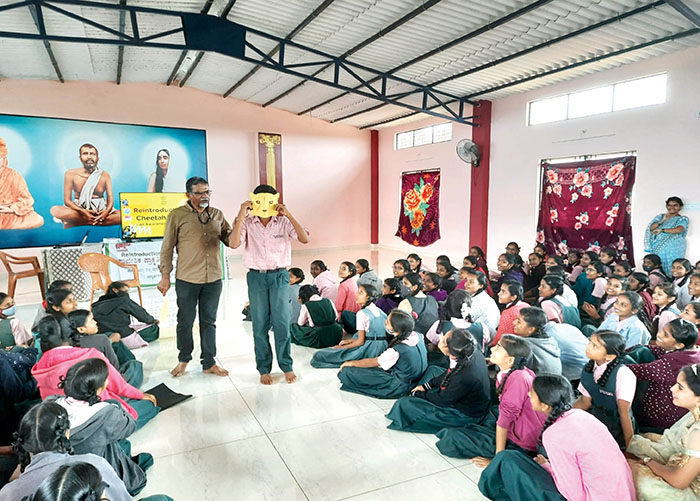PM Modi to release Cheetahs at Kuno National Park in Madhya Pradesh on Sept. 17
Mysore/Mysuru: To create awareness among children, the Regional Museum of Natural History (RMNH) in Mysuru has been organising offline programmes on the ‘Reintroduction of Cheetahs in India’ through extensive physical interaction with students during the campaign from Sept. 9 to 16.
The purpose of the introduction is to create curiosity and awareness among the children about this important extinct species which will be reintroduced in India. During this period, campaigns will be organised where the resource persons from the museum will interact with students.
PM to release Cheetahs
Meanwhile, Prime Minister Narendra Modi will inaugurate the ‘Reintroduction of the Cheetahs’ project at the Kuno National Park in the Sheopur district of Madhya Pradesh on Sept. 17. PM Modi will also release Cheetahs being brought from Africa into the State’s forests. The big cat species will be reintroduced in India after 70 years since being declared extinct in 1952.
The Cheetahs for release into the selected sites in India would be sourced from the ancestral South African Cheetah and Namibian populations. The South African population of Cheetah was found to be equally close genetically as any other sub-species to the extinct Indian Cheetah.
Reports said that the first batch of eight animals — five females and three males — will arrive in Jaipur on Sept. 17 from where they would be heli-lifted to Kuno National Park for the PM to release them in their designated quarantine enclosure. After spending a month in quarantine, the animals would be released in a larger holding area where live prey would be available.

IUCN guidelines followed
Under the ambitious project of the Indian Government, the reintroduction of wild species particularly Cheetah is being undertaken as per the International Union for Conservation of Nature (IUCN) guidelines.
After the reintroduction, the Cheetahs will serve as a flagship to save not only its prey base but also other endangered species of the grassland and semi-arid ecosystems and ensure better management and restore their ecosystem. It will contribute to the global effort toward the conservation of the Cheetahs as a species and additionally, Cheetah’s introduction is likely to improve and enhance the livelihood options and economies of the local communities.
Programmes in Mysuru
“The release of Cheetahs is an important step towards wildlife conservation in India and also it is a proud moment for every Indian citizen. The students are exited to welcome the Cheetahs back into the wild,” said M. Vijay, RMNH scientist.
The RMNH Mysuru has been conducting awareness programmes in schools across Mysuru city and has so far covered 16 schools. “The target is 50 schools in and around Mysuru and resource persons (Scientist Dr. A.P. Tiwari and Educational Officers S.J. Sreenivasa and B.S. Yogendra) are also conducting awareness at schools in Bannur, Malavalli, T. Narasipur, Gavadagere and Hunsur.
Project Tiger, Project Elephant
The project aims to re-establish the species in its historical range in the country. India has a long history of wildlife conservation. One of the most successful wildlife conservation ventures ‘Project Tiger,’ which was initiated way back in 1972, has not only contributed to the conservation of tigers but also to the entire ecosystem.
The ‘Project Elephant’ was launched in 1992 to protect and conserve Asian elephants in India. Similarly, many successful reintroduction programmes have been carried out in India. In continuation, the reintroduction of Cheetahs which we have lost recently is one step ahead and a milestone in the history of wildlife conservation in India.








Recent Comments